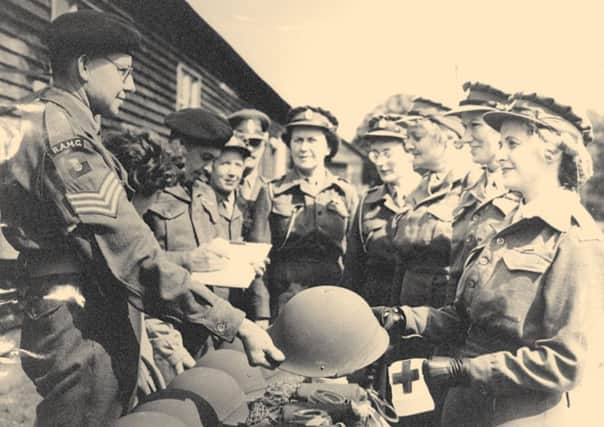Women war heroes march into new exhibition


James Miranda Barry is one of the characters featured in the exhibition, put together by the Royal College of Surgeons of Edinburgh, which also includes details of the heroic deeds performed by women in the Great War.
Unsung heroines of the Crimean War, the American Civil War, the Boer War and the two great conflicts of the 20th century are featured in the exhibition, which is be lent to libraries and community centres in the new year.
Advertisement
Hide AdCompiled in conjunction with Yvonne McEwen, of the Centre for the Study of Modern Conflict at Edinburgh University, a sizeable part of the presentation deals with Barry, a surgeon who was born with the name of Margaret Ann Bulkley.
In 1809, she underwent a peculiar change of gender. At a time when it was easier for men to pursue a medical career, her new identity as James Barry enabled her to get a doctorate in medicine at Edinburgh University in 1812.
From 1813 until 1859, she served as a surgeon in the British Army, treating the wounded in the Napoleonic and Crimean wars.
A prickly character, she was even involved in a dual. And it was another female wartime medical pioneer Florence Nightingale, who remarked: “After he was dead, I was told that [he] was a woman… I should say that [she] was the most hardened creature I ever met.”
Another woman to be celebrated is Mary Seacole, who was born in Jamaica to a Scottish soldier and a Jamaican mother.
Secole travelled to the Crimea where she set up a “British Hotel” behind the lines, which she described as “a mess-table and comfortable quarters for sick and convalescent officers”.
Advertisement
Hide AdShe was the only woman to travel to the battlefront. Out of her own funds she bought comforts and supplies for the sick and wounded.
Chris Henry, director of heritage at the Royal College of Surgeons of Edinburgh, said the timetable and venues had yet to be pinned down, but it was hoped that taking the exhibition further afield would spread the word about these remarkable women.
Advertisement
Hide AdMr Henry said: “From our point of view, the surgical museum tends to deal with male practitioners and surgeons.
“But actually there is a whole support network out there and we wanted to highlight women like Mary Seacole and James Miranda Barry, that curious individual who was both male and female. They are a big part of our heritage and it is important that people learn about them.
“By taking this to libraries it is hoped that the exhibition will be seen by people, who might not necessarily come to the museum.”
In a year that will see the 100th anniversary of the outbreak of the First World War, the heroic role played by women in that conflict is also featured prominently.
The exhibition noted that at the beginning of the Great War, there were only 300 trained nurses in the Queen Alexandra’s Imperial Nursing Service.
By the time of the 1918 Armistice, more than 10,000 trained nurses had served in all theatres of war, supported by 50,000 volunteer nurses on the Home and Fighting Fronts.
Advertisement
Hide AdOne nurse to be remembered is Millicent Bruce Peterkin, a Scot who spent five years on the Western Front serving as an army nursing sister.
She kept a diary throughout her service.
An extract quoted for the exhibition said: “As will be readily understood, the nursing of the patients in these crowded conditions was very difficult.
“However, I am thankful to say that I never lost any of my patients en route, though we sometimes had a hard struggle to keep them alive.”